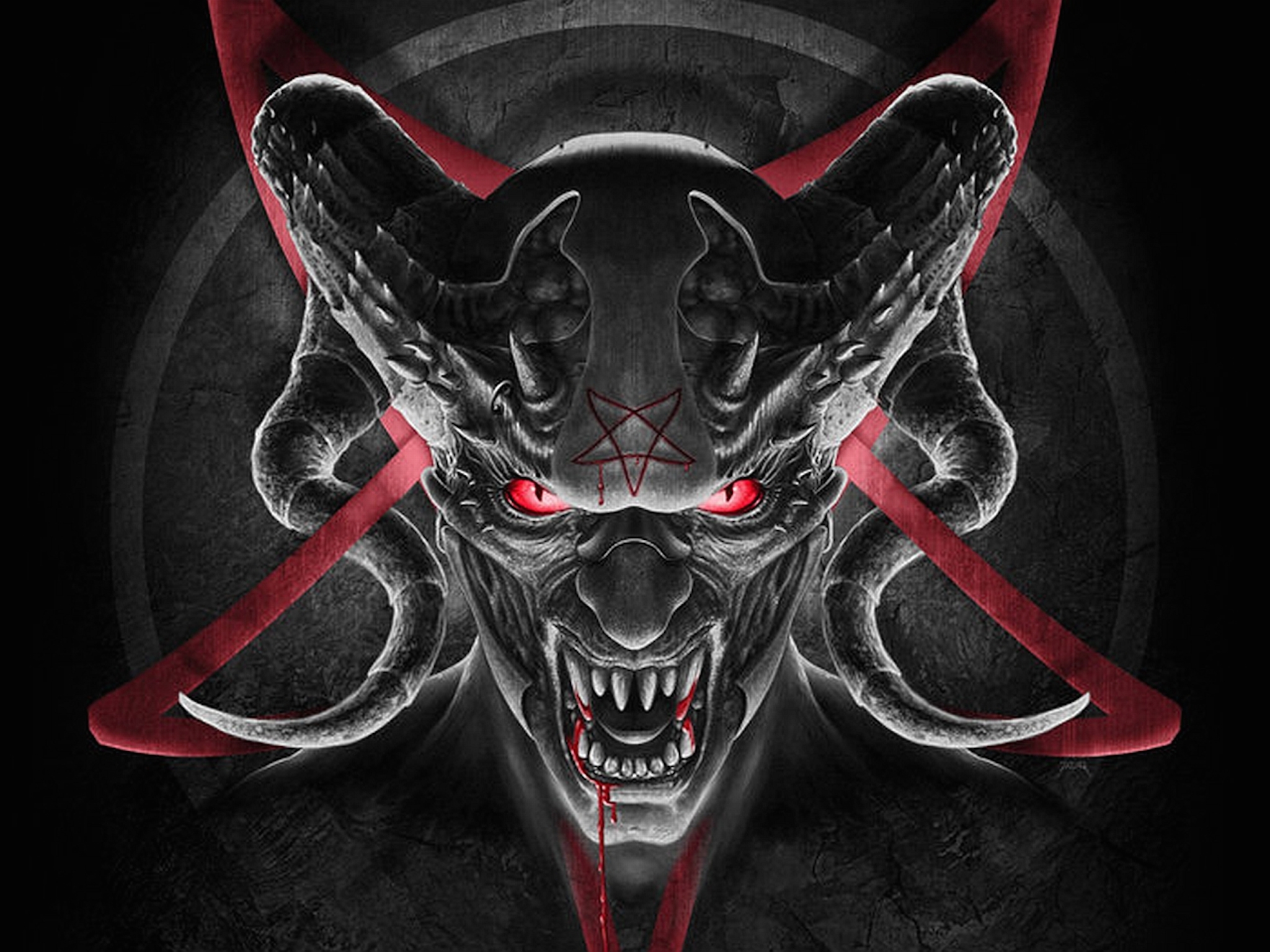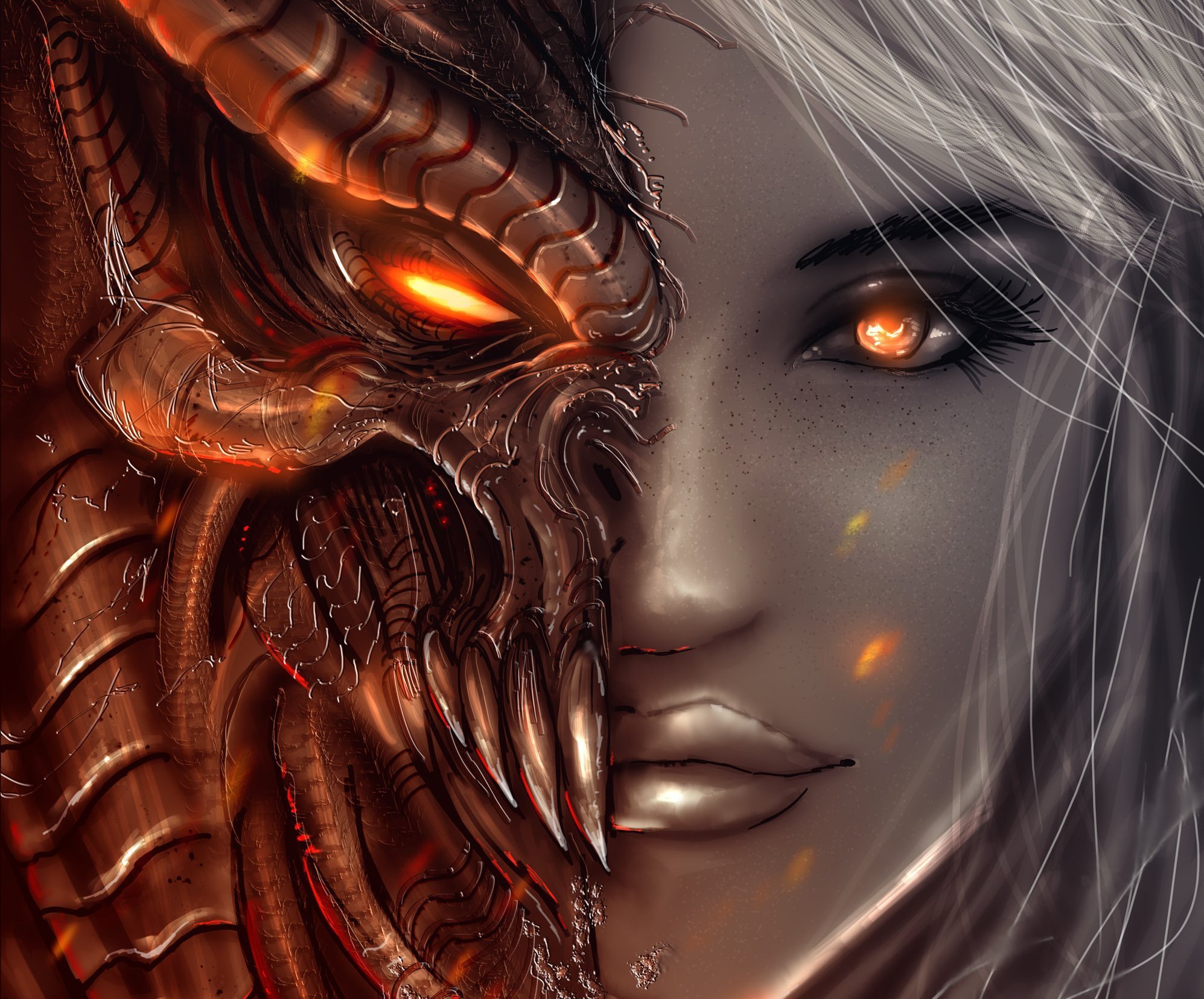What Is Demon Face Syndrome? Exploring Prosopometamorphopsia, A Rare Visual Distortion
Imagine looking at a familiar face, perhaps a loved one, and suddenly seeing it warp into something unrecognizable, something unsettling. This isn't a scene from a horror movie; it's a very real, incredibly challenging experience for people living with a rare condition known as Prosopometamorphopsia, or PMO. Often, it's called "Demon Face Syndrome" because of the way faces can appear stretched, distorted, or even, well, demonic to those affected.
This unusual visual disorder really changes how the brain processes faces. Most people see human features just as they are, but for someone with this condition, the sight can be quite different. It's not about hallucinations, you know, like seeing things that aren't there. Instead, it's a distortion of what's actually in front of them, a kind of altered reality for facial perception. A patient with a unique form of the condition even helped researchers show what these "demonic" distortions look like when he sees human faces.
Understanding this condition is pretty important, as it can have a big impact on daily life and even mental well-being. So, we're going to explore what exactly Demon Face Syndrome is, how it affects individuals, and what current knowledge tells us about its causes and any available ways to help. It's a fascinating, if a little frightening, look into how our brains interpret the world around us.
- Cleveland Cavaliers Vs Milwaukee Bucks Match Player Stats
- Welcome To Our Group
- Eulogy Zero
- Street Outlaws Okc Cast
- Hand Ladies Tattoo
Table of Contents
- What Exactly is Demon Face Syndrome?
- The Experience of Seeing Distorted Faces
- What Causes Demon Face Syndrome?
- Diagnosing the Condition
- Treatment and Support for PMO
- Living with PMO: Daily Challenges and Mental Health
- Frequently Asked Questions (FAQs)
What Exactly is Demon Face Syndrome?
Demon Face Syndrome, or Prosopometamorphopsia (PMO), is a truly rare visual disorder that affects how a person perceives faces. It's a neurological condition, meaning it has to do with the brain. Basically, the brain has trouble processing facial features correctly, leading to significant visual distortions. When someone with PMO looks at another person's face, the features might appear stretched, sunken, or changed in shape, size, texture, or even color. This is why, you know, it gets its striking nickname.
The term "demon face syndrome" comes from how these distortions are described by those who experience them. For instance, one individual mentioned seeing a roommate's face stretch to look like "something out of a Star Trek movie, like a demon face." This vivid description really captures the unsettling nature of the condition. It's a perceptual challenge that can make everyday interactions incredibly difficult, so it's a big deal for those affected.
This condition isn't about a problem with the eyes themselves, but rather with the brain's visual processing centers. It's a bit like your brain is playing a trick on you, but it's not a trick you can just, you know, shake off. A 2024 paper even became the first to visualize exactly how people with the condition see faces, which is a huge step in helping others understand this unique experience. This kind of research is pretty vital for those who are living with PMO.
The Experience of Seeing Distorted Faces
The personal experience of living with Demon Face Syndrome can be quite isolating and frightening. Imagine seeing everyone around you with faces that appear to be, well, twisted or monstrous. This isn't just a slight blur or a minor visual anomaly; it's a profound alteration of how you perceive one of the most fundamental aspects of human interaction. A Tennessee man, for example, has this rare disorder, and for him, images show, faces look truly demonic. It's a very real struggle, actually.
This condition affects individuals differently, but the core issue remains the same: faces just don't look normal. Some might see features like eyes or mouths shift out of place, while others might experience changes in the overall shape of the face, perhaps making it appear elongated or compressed. It can be a truly disorienting experience, and you know, it's not something that people can just ignore or wish away. It's always there when they look at someone.
Not a Hallucination
It's very important to understand that PMO is not a hallucination. People with this syndrome aren't seeing things that aren't there. Instead, they are seeing real faces, but the faces are distorted. This is a key difference. A hallucination is when you perceive something that doesn't exist externally, but with PMO, the external stimulus – the actual face – is present. The brain just interprets it incorrectly. It's a bit like a computer glitch in the visual processing system, if you will.
This distinction is pretty important because it helps medical professionals understand the nature of the disorder and how to approach it. It also helps those affected explain what they are going through to others. It's not a sign of a mental health issue in the way that hallucinations might be, though the condition can certainly impact mental well-being. So, it's a neurological quirk, not a trick of the mind in that sense.
The Range of Distortions
The distortions experienced with Demon Face Syndrome can vary quite a bit from person to person. Some might see faces with stretched features, while others might observe changes in texture, making skin appear rough or scaly. The color of faces might even seem altered. It's a wide spectrum of visual changes, and that, you know, makes each person's experience pretty unique.
For some, the distortions might only appear when looking at certain people or under specific conditions. For others, it could be constant, affecting every face they see. The severity also varies, with some experiencing mild changes and others seeing truly terrifying transformations. This variability means that understanding and treating the condition requires a very personalized approach, as a matter of fact.
What Causes Demon Face Syndrome?
The exact causes of Prosopometamorphopsia are still being actively researched, but it's generally understood to be a neurological disorder. It often results from some kind of brain dysfunction, perhaps related to specific areas of the brain involved in facial recognition. Sometimes, it can be linked to brain injuries, strokes, tumors, or even certain neurological conditions like epilepsy. It's a complex puzzle, really, and scientists are still putting the pieces together.
In some cases, PMO can appear without any clear underlying cause, which can be even more puzzling for those affected and their doctors. The brain is an incredibly intricate organ, and the pathways responsible for processing visual information, especially faces, are quite delicate. Any disruption to these pathways can lead to unusual perceptual experiences like this syndrome. So, there's a lot to learn about it, you know.
The fact that a 2024 paper was able to visualize the distortions for the first time suggests that our understanding is evolving. This kind of research helps pinpoint which brain areas might be involved and what might be going wrong. It's pretty exciting, actually, to see science making strides in explaining such a baffling condition. Discovering what causes it is a big step towards finding effective ways to help people.
Diagnosing the Condition
Diagnosing Demon Face Syndrome typically involves a detailed medical history and a thorough neurological examination. Doctors will want to rule out other conditions that might cause visual disturbances, like eye problems or psychiatric disorders. Since it's a rare condition, it can sometimes be misdiagnosed or take a while to identify. It really takes a careful and patient approach from medical professionals, so it's not always straightforward.
Neuroimaging techniques, such as MRI scans of the brain, might be used to look for any structural abnormalities or lesions that could be contributing to the symptoms. Doctors also rely heavily on the patient's description of their visual experiences. Because the distortions are subjective, what one person sees is truly unique to them, making their detailed accounts absolutely vital for diagnosis. A doctor explaining prosopometamorphopsia, like Dr. Azmain, would rely heavily on these patient descriptions.
The rarity of PMO means that many healthcare providers might not be familiar with it. This can make the diagnostic journey a bit challenging for patients. However, increased awareness and research, like the recent studies, are helping to change that. It's pretty important that people who experience these symptoms seek out a neurologist or a specialist in visual perception disorders. Learn more about neurological conditions on our site.
Treatment and Support for PMO
Because Demon Face Syndrome is so rare and its causes can vary, there isn't one universal treatment that works for everyone. Treatment often focuses on addressing any underlying neurological conditions if they are identified. For instance, if the PMO is caused by a seizure disorder, managing the seizures might help alleviate the facial distortions. It's a bit of a detective job, figuring out the best path forward.
In cases where no clear cause is found, or if the underlying cause can't be directly treated, management focuses on helping individuals cope with the symptoms. This might involve strategies to help them recognize people despite the distortions, such as focusing on voice, gait, or other distinguishing features. It's about finding ways to adapt to this very unusual way of seeing the world. Sometimes, just knowing what it is can be a huge relief for people.
Support groups and counseling can also be incredibly beneficial. Living with a condition that alters your perception of others so profoundly can lead to feelings of isolation, anxiety, or depression. Connecting with others who understand, or talking to a therapist, can provide much-needed emotional support and coping strategies. It's really about helping people manage the impact on their mental health and daily life, as a matter of fact. You can also link to this page for more information on coping strategies.
Living with PMO: Daily Challenges and Mental Health
Living with Demon Face Syndrome presents a unique set of daily challenges. Simple interactions, like having a conversation with a friend or going to the grocery store, can become incredibly stressful when every face you see is distorted. This can lead to social withdrawal, as people might avoid situations where they have to interact with others face-to-face. It's a very isolating experience, you know, when the world looks so different.
The constant visual distortion can also take a significant toll on mental health. Anxiety, fear, and even depression are common among individuals with PMO. The unsettling nature of seeing "demonic" or highly altered faces can be deeply distressing. It's not just a visual problem; it's an emotional and psychological burden that people carry every day. Understanding this impact is pretty vital for providing comprehensive care.
Raising awareness about PMO is also very important. When more people, including healthcare professionals and the general public, understand this condition, it can reduce the stigma and help those affected feel less alone. It also encourages further research into causes and treatments, which is pretty much the ultimate goal. The more we know, the better we can support individuals living with this rare and challenging visual disorder.
Frequently Asked Questions (FAQs)
Here are some common questions people ask about Demon Face Syndrome:
Is Demon Face Syndrome a sign of a mental illness?
No, Demon Face Syndrome, or Prosopometamorphopsia (PMO), is a neurological disorder, not a mental illness. It's a problem with how the brain processes visual information, specifically faces, rather than a psychiatric condition. While it can cause significant emotional distress and impact mental well-being, the condition itself originates from the brain's visual pathways. It's pretty much a specific brain glitch, actually.
Can Demon Face Syndrome be cured?
Currently, there isn't a universal cure for Demon Face Syndrome. Treatment often focuses on addressing any underlying neurological causes, if they can be identified, or on helping individuals manage their symptoms and cope with the visual distortions. Research is ongoing, and new studies, like the 2024 paper, are helping scientists understand the condition better, which might lead to more effective treatments in the future. So, there's hope, really.
How rare is Prosopometamorphopsia?
Prosopometamorphopsia (PMO) is considered an extremely rare visual disorder. The exact prevalence is not widely known because of its rarity and the challenges in diagnosis. However, cases are documented, and increased awareness is helping to identify more individuals living with this unique condition. It's not something you hear about every day, that's for sure.
For more detailed medical information, you might find it helpful to consult resources from reputable medical institutions or academic journals. For instance, a good starting point could be a search for "Prosopometamorphopsia" on the National Institutes of Health website, which is a very reliable source for health information.
- How Did Technoblade Die
- Cleveland Cavaliers Vs Milwaukee Bucks Match Player Stats
- States With Highest Humidity
- When Does Oliver Die
- Robertson And Sons

Demon by Gpzang on DeviantArt

Evil Demon Wallpaper | Free Demon Downloads

Dual Realms: Angel and Demon HD Wallpaper